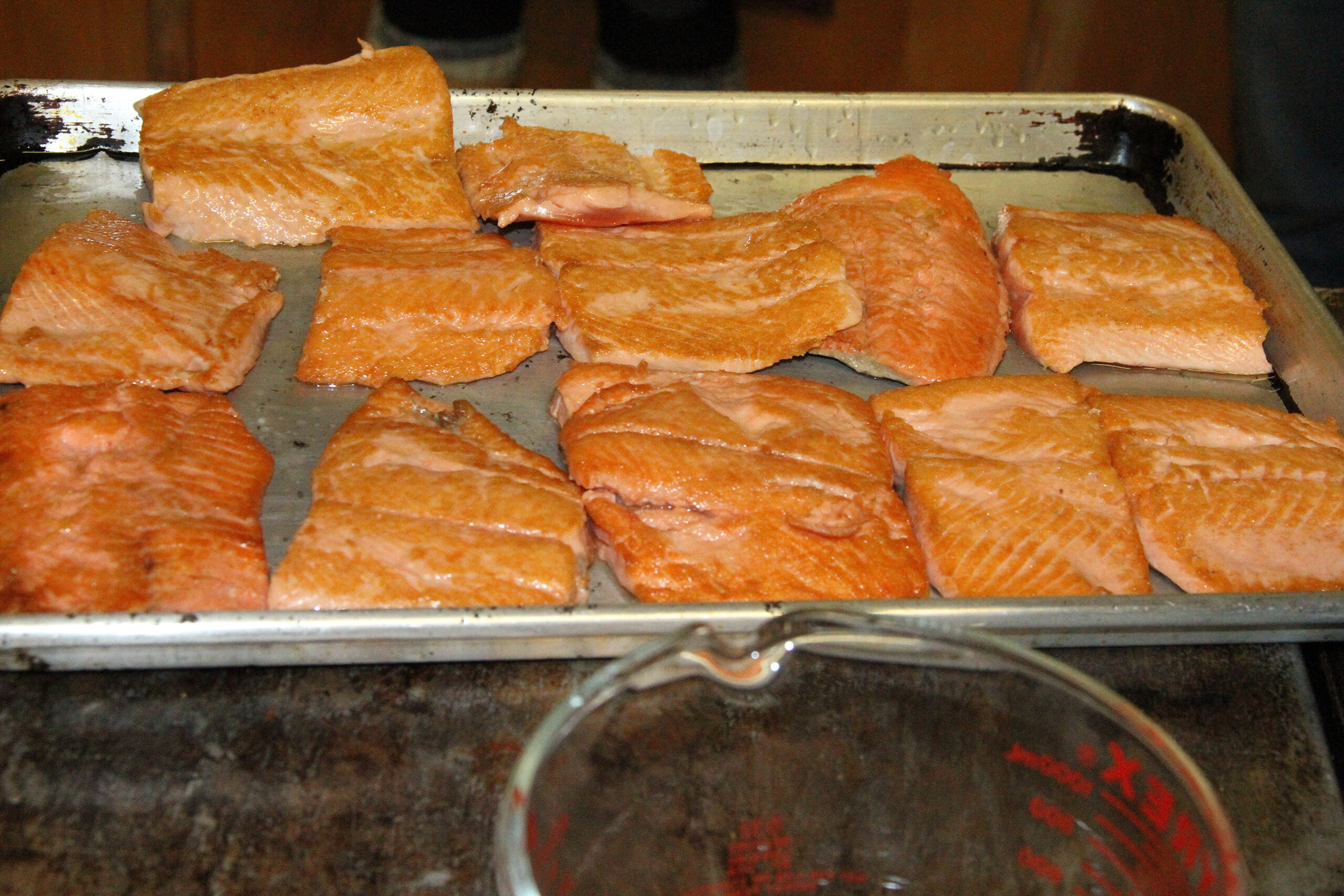Policy Name: Fish-to-Schools Program, Sitka, Alaska
Overview: Every Wednesday, students in the Sitka School District eat fresh, wild, locally caught fish for lunch at school. Students are also taught lessons addressing the importance of fishing and eating locally caught fish.
Location: Sitka, Alaska
- Island community in southeast Alaska
Population: 8,647
Food Policy category: Diet and Nutrition / Sustainable Agriculture
Program goals: To make healthy, locally-sourced foods available to children at Sitka schools, and to teach them about the cultural, economical, and ecological importance of fish in Alaska.
How it works: Alaskan fishermen harvest wild-caught salmon and other fish and donate them to Sitka schools, providing about one-quarter of the fish needed to feed all children in the district each week; the rest is purchased by the school district with funding from the Nutritional Alaskan Foods in Schools Program. School chefs use the fish to prepare a variety of meals, including fish nuggets, baked salmon, and fish chowder, that are served to students for lunch on Wednesdays. In addition, the Sitka Conservation Society has created a Fish to Schools Resource Guide with information about serving fish in schools, as well as Fish to Schools Classroom Lessons to help teachers lead conversations and teach students about the work of local fishermen and how the fish moves from stream to plate.
Progress to date: Each year, Sitka holds a health summit during which community members decide on goals to improve residents’ health. Serving locally caught fish to students at school became the goal of the 2010 summit. The program started by serving locally caught fish once a month at one Sitka school and quickly grew to serving fish every Wednesday at every school in the Sitka School District.
Why it is important: Eating locally-sourced fish in Sitka schools is important for both nutritional and cultural reasons. Nutritionally, fish like wild salmon provides a source of lean protein as well as omega-3 fatty acids, which are important for brain development and linked to heart health and the prevention of cancer and other chronic illnesses. In Alaska, fishing is an essential contributor to the local economy, and the Fish-to-Schools Classroom Lessons help children understand what fishermen do while also encouraging them to support the fishing industry.
Program/Policy Initiated: The Fish-to-Schools program began following Sitka’s annual health summit in 2010.
Point of contact:
- Heather Bauscher, Sitka Conservation Society
- (907) 747-7509
- heather@sitkawild.org
Similar Practices: Sitka’s program has become a model for other schools and districts in Alaska. For example, the North Slope Borough School District now includes locally-caught halibut, as well as Alaskan blueberries and honey, in school lunches.
Evaluation: Cassee Olin, the business manager for the Sitka School District, said in 2017 that kids in Sitka like fish, which has helped the program’s success. One fifth grader declared that “No one that’s not vegetarian does not like fish that I know.” The program was given an innovation award from the Alaska Farm-to-Schools Program in 2012.
Learn more:
- Fish-to-Schools 2018 Video (YouTube)
- A Guide to Serving Local Fish in School Cafeterias (Sitka Conservation Society)
- Stream to Plate – Fish to Schools Classroom Lessons (Sitka Conservation Society)
References:
- Do Kids Need Omega 3 Fats (Eat Right)
- Eat Smart – Alaska’s Fish to Schools Program (Edible Alaska)
- Fish to School: Sitka’s School Lunch Program Continues to Satisfy (KCAW)
- Fish-to-Schools Feeds Sitka Students Locally Caught, Donated Salmon (KTVA)
- Fish to Schools Program Launches Annual Coho Salmon Donation Drive for Commercial Fishermen (Sitka Local Foods Network)
- Omega-3 Fatty Acids: An Essential Contribution (Harvard School of Public Health)
- Serving Fish and Locally Harvested Foods for School Lunches (State of Alaska)


